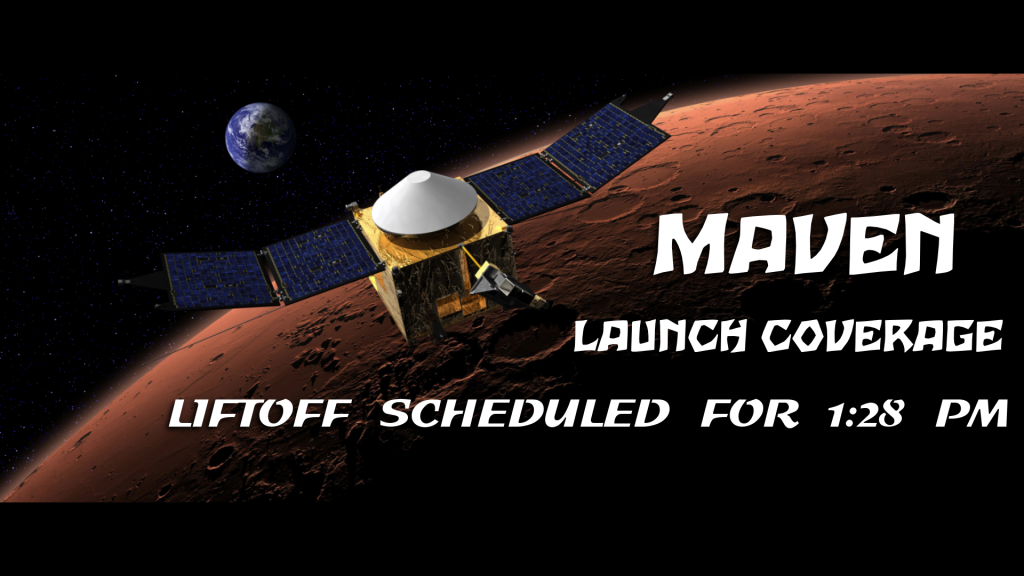
The newest mission to Mars, MAVEN, will be launching today at 1:28pm EST...provided the weather holds. I have embedded a video player that will show the launch live. I will replace with a recorded video of the launch later today. Below that is some information about the mission, beginning with a PSA by LeVar Burton.
More about the mission below:
MAVEN stands for Mars Atmosphere and Volatile EvolutioN
Mission Briefing:
Features on Mars resembling dry riverbeds and the discovery of minerals that form in the presence of water indicate that Mars once had a thicker atmosphere and was warm enough for liquid water to flow on the surface. However, that thick atmosphere was somehow lost to space. Scientists suspect that over millions of years, Mars lost 99% of its atmosphere as the planet’s core cooled and its magnetic field decayed, allowing the solar wind to sweep away most of the water and volatile compounds the atmosphere once contained.
The goal of MAVEN is to determine the history of the loss of atmospheric gases to space, providing answers about Martian climate evolution. By measuring the rate with which the atmosphere is currently escaping to space and gathering enough information about the relevant processes, scientists will be able to infer how the planet's atmosphere evolved over time. MAVEN will have four primary scientific objectives:
•Determine the role that loss of volatiles to space from the Mars atmosphere has played through time.
•Determine the current state of the upper atmosphere, ionosphere, and interactions with the solar wind.
•Determine the current rates of escape of neutral gases and ions to space and the processes controlling them.
•Determine the ratios of stable isotopes in the Martian atmosphere.
MAVEN is expected to reach Mars in September 2014. By then, the Sample Analysis at Mars (SAM) instrument suite on board the Curiosity rover will have made similar surface measurements from Gale crater, which will help guide the interpretation of MAVEN's upper atmosphere measurements. MAVEN's measurements will also provide additional scientific context with which to test models for current methane formation in Mars.
More information can be found on the mission page at NASA.






























0 comments :
Post a Comment